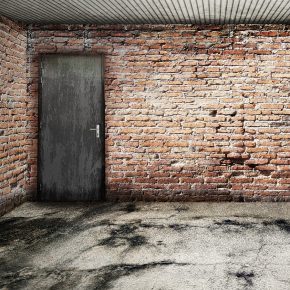
Net Zero: How Will Homes Change?
The world is facing an existential crisis in the form of climate change, as rising global temperatures wreak devastating impacts on communities and ecosystems in every continent. Ahead of the COP27 summit in Sharm El Sheikh, the UN unveiled a scathing report indicating that no real headway had been made in combatting climate change and that there is ‘no credible pathway to 1.5C [maximum temperature rise by 2030] in place’.
But governments worldwide have nonetheless been instituting various measures to attempt to reduce their own national carbon emissions, with the UK no different. One area of particular scrutiny is the ‘built environment’ – encompassing construction and the emissions associated with domestic and commercial premises – which is earmarked to be responsible for a quarter of UK greenhouse gas emissions.
Government legislation has been introduced to reduce this impact, with increased pressure placed on construction businesses and new home developments to meet new climate-based guidelines and standards. In what specific ways will the make-up of the modern home change to fit these standards?
Building Materials
The home construction pipeline’s direct impacts on the climate cannot be ignored. There are numerous progenitors of greenhouse gases and other pollutants along the supply chain, from the usage of generators and supply fleets to the production of raw materials themselves.
Today’s domestic constructions can turn away from the disproportionate pollution caused by using materials like concrete and other organic sheet materials like plywood. Many new wood products are fit for structural use, enabling the sustainable building of new properties that do not run the risk of short-term instability and collapse.
Insulation
But cutting emissions does not stop with the construction process or pipeline. Recent changes to building regulations also require all new homes to produce 30% fewer emissions than the current benchmark – meaning builders and project managers also need to make shrewd long-term decisions that forefront energy efficiency in usage.

Insulation is one of the most important ways in which home energy efficiency can be improved, with large-scale insulation work such as cavity wall insulation or solid wall cladding capable of significantly reducing carbon emissions by reducing heat transfer to outside. Internal insulation solutions reduce heat transfer to colder areas, allowing rooms to remain warm.
Heating Systems
The other half of the equation can be found in the heating systems that actively heat homes. In tandem with effective insulation, energy-efficient heating can ensure a home is not needlessly polluting. Newer energy-efficient boilers are a short-term solution to a long-term problem, but green alternatives in the form of biomass boilers and ground-source heat pumps are fast proving to be the future.
Latest news

4th March 2025
Gilberts Proves How to Balance Cost-Effective Restoration
Hidden talents have been revealed in the renovation of an iconic 1930s art deco building to transform it into a modern entertainment venue – and Gilberts Blackpool ventilation features there…
Posted in Air Conditioning, Articles, Building Industry News, Building Products & Structures, Building Services, Case Studies, Facility Management & Building Services, Heating, Ventilation and Air Conditioning - HVAC, Restoration & Refurbishment, Retrofit & Renovation
4th March 2025
S. Norton Group showcases £20m shredder for metals recycling CEOs
S. Norton Group hosted a tour of its latest £20m investment in state-of-the-art shredder technology for 17 senior leaders in the European metals recycling industry.
Posted in Articles, Building Industry News, Building Products & Structures, Building Services, Case Studies, Facility Management & Building Services, Plant, Equipment and Hire, Posts, Site Preparation, Sustainability & Energy Efficiency, Waste Management & Recycling
28th February 2025
Passivent ventilation solutions are top of the class
Passivent has supplied a combination of Hybrid Plus2 Aircool ventilators and Hybrid Plus Airstract roof ventilation terminals for a new London primary school.
Posted in Air Conditioning, Articles, Building Industry News, Building Products & Structures, Building Services, Case Studies, Ceilings, Facility Management & Building Services, Heating, Ventilation and Air Conditioning - HVAC, Restoration & Refurbishment, Retrofit & Renovation, Roofs, Sustainability & Energy Efficiency, Ventilation, Walls
28th February 2025
Troldtekt: New acoustic liner ensures good acoustics and easy handling
Both a building’s users and its developers have a good reason to get excited about the new Troldtekt Plus 25 panels. This specially developed acoustic panel sets a high standard for both sound absorption and building efficiency.
Posted in Acoustics, Noise & Vibration Control, Articles, Building Industry News, Building Products & Structures, Building Services, Building Systems, Ceilings, Facility Management & Building Services, Floors, Innovations & New Products, Insulation, Interior Design & Construction, Interiors, Restoration & Refurbishment, Retrofit & Renovation, Timber Buildings and Timber Products, Walls
 Sign up:
Sign up: